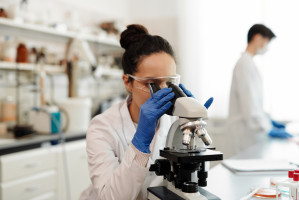
The development of various hypoxia-activated prodrugs (HAPs) has made considerable advances in the last few decades; however, cancer therapy using HAPs is still hindered by problems such as poor therapeutic outcomes due to difficulty in reaching the hypoxic region and metastasis resulting from hypoxia.
To that end, a team of researchers in China proposed a novel treatment approach capable of enhancing HAP-based chemotherapy and suppress tumour metastasis.
Hangrong Chen, a professor at the Shanghai Institute of Ceramics, Chinese Academy of Sciences and one of the lead authors of the study, explained that solid tumours often contain areas with low oxygen concentration (hypoxia) near areas of necrosis.
These hypoxic regions are resistant to both radiotherapy and chemotherapy, providing an opportunity for selective therapy such as prodrugs activated by hypoxia.
“HAPs, also known as bioreductive prodrugs, which can become toxic drugs in a hypoxia-dependent manner, are non-toxic in normoxic regions,” added Chen.
“However, one major hindrance for the clinical translations of HAPs is the inability to reach hypoxic regions that are distant from blood vessel network, which results in inadequate exposure to antitumour HAPs and contributes to low efficient chemotherapy.”
The team created a novel hypoxia-inducible chitosan polymer that can be combined with antiangiogenic Pazopanib to form an injectable hydrogel that is sensitive to oxygen.
Enzyme-mediated chemical reactions enable the polymers to react to oxygen and cause gelation.
By administering this oxygen scavenging hydrogel with HAPs, it is possible to improve the hypoxic environment of tumours, leading to heightened toxicity of HAP for selective chemotherapy.
Furthermore, when exposed to elevated ROS in tumour regions, the responsive linkages within the hydrogel are broken, allowing sustained release of Pazopanib and inhibiting pulmonary metastasis.
The team’s findings are published in the KeAi journal Bioactive Materials.
In the study the oxygen elimination within the tumour was visualised in real-time with a micro-PET imaging technique provided by Professor Shaoli Song, a co-supervisor the study.
“This novel hydrogel can significantly remodel tumour hypoxic microenvironment as a kind of engineered niche,” said Song.
“We hope that our results will encourage scientists to continue investigating the use of HAP-based chemotherapy to combat cancer.”
Source: KeAi Communications Co., Ltd.
We are an independent charity and are not backed by a large company or society. We raise every penny ourselves to improve the standards of cancer care through education. You can help us continue our work to address inequalities in cancer care by making a donation.
Any donation, however small, contributes directly towards the costs of creating and sharing free oncology education.
Together we can get better outcomes for patients by tackling global inequalities in access to the results of cancer research.
Thank you for your support.